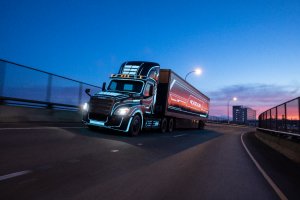 By Casey Horan
By Casey Horan
Recently, a friend sought my help in finding a zero-emission upgrade for his old gas-guzzler. Incentivized by increased cost-competitiveness and a desire to be more environmentally conscious, he was eager to see the new zero-emission vehicle models. To our dismay, dealer after dealer informed us that, not only was the supply for all new ZEVs backed up for months, but prices had increased significantly. Why? Every dealer cited supply chain issues.
A global shortage of chips — tiny semiconductors that make all our electronics work — has forced automakers to delay or halt production for all new vehicles, including ZEVs. While this specific disruption will not impact the long-term market adoption of ZEVs, it does underscore the need to boost domestic manufacturing. The U.S. must not allow an overreliance on foreign suppliers for ZEV components to impede our ability to meet transportation electrification targets, including for medium- and heavy-duty ZEVs, which are a critical part of plans to reduce emissions and address public health and equity concerns across the nation.
To prevent further market instability and delay, Congress should pass the Build Back Better Act and states must implement coordinated policies to encourage investment in domestic supply of essential ZEV parts.
Supply issues cause delays
2021 has been a banner year for new MHD ZEVs, but it could have been even better. Many prominent companies have been expected to begin or expand production for replacing high polluting diesel trucks and buses. However, the shortage has impacted these plans, including:
- Despite success in recent ZEV drayage pilots, Daimler has delayed production for new units of the Freightliner eCascadia and EM2, citing the chip shortage.
- Tesla also recently announced that its electric semi-truck will be delayed until 2022, citing supply chain issues for both chips and battery cells.
Of course, these issues aren’t isolated to electric trucks as Navistar, Volvo and other manufacturers have seen impacts on their combustion vehicle lines too.
Chip shortage highlights the need for coordinated federal, state policy on zero-emission vehicles Share on XThe transition to ZEVs provides a unique opportunity to build a domestic manufacturing industry that would help guard U.S. manufacturers and consumers from the volatility of global supply. Creating a strong base of domestic supply can be a hedge against future price spikes driven by global imbalances. Developing this capacity requires time, and given the urgent need to transition to ZEVs, we must start now.
Moving forward with coordinated policy
We can begin to address this problem by getting ahead of future supply chain issues for chips and other components, including battery cells. Once a leader in the chip industry, U.S. companies have largely restructured their business models to outsource manufacturing overseas. Now, just two Asian companies, TSMC and Samsung, dominate 70% of the global chip market.
The White House has acknowledged the seriousness of this issue. President Biden signed an executive order addressing the shortage, and the recently passed bipartisan Infrastructure Investment and Jobs Act includes billions of dollars for research and grants to establish supply chain resiliency and support innovation and growth in domestic manufacturing. Still, Congress should complement these efforts by passing the Build Back Better Act, which would ensure we are in the best position to overcome future market instability.
Increasing domestic supply is a start, but we also need coordinated state policies to persuade private companies to continue investing in domestic ZEV production and encourage widespread transition in the near-term. By moving forward with the adoption of policies like the Advanced Clean Trucks Rule and incentive and rebate programs we can help ensure the transition away from high-polluting trucks and buses stays on track.
In short, when the entire world is reliant on a handful of companies for essential parts, there are bound to be periodic disruptions with far-reaching market impacts. Therefore, jurisdictions must coordinate and plan ahead by investing in domestic production and incentive programs that will ensure all new MHD trucks sold in the U.S. are zero-emission by at least 2040. The stakes are high, and we cannot afford any further delays in addressing the climate, public health and equity impacts caused by MHD transportation emissions.









